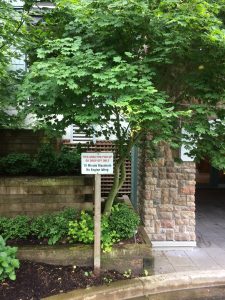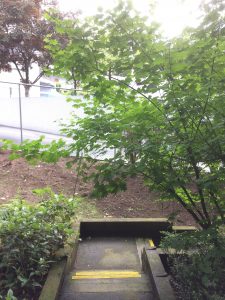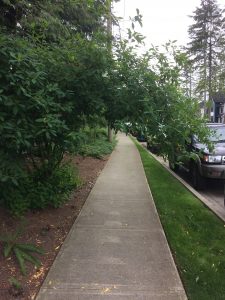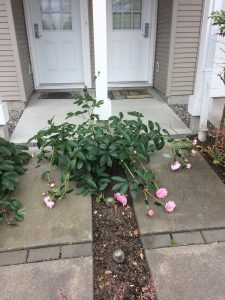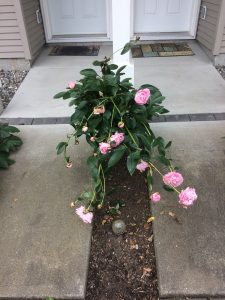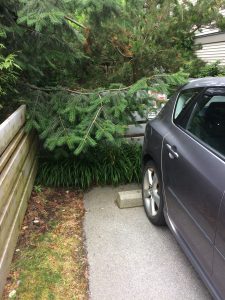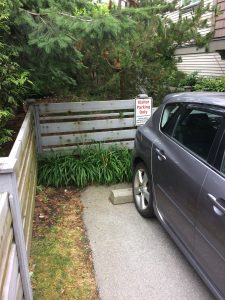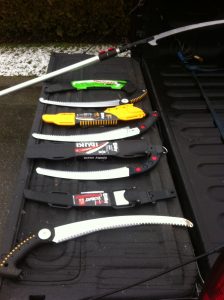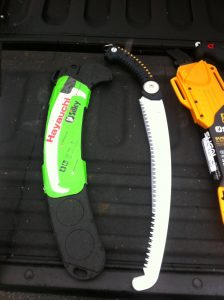Obstruction in the landscape is a well-known theme but it’s often missed or ignored. Especially by newer crew leaders and workers. So let’s examine some cases of obstruction and learn from them.
Spring rains
This is what happens after spring rains and early season growth. All of a sudden we have obstruction everywhere. Immediate corrective action is required by people’s front doors.
Walkways
It happens all the time. Your new worker concentrates on his lawns and in his rush to complete the work places his tarps on walkways. Then a senior citizen pulls up in a motorized scooter and we have a problem. If you think senior citizens aren’t capable to angry outbursts and middle finger salutes, think again. Never block walkways.
Signs
Signs exist because they have a message to convey. It’s easy for vegetation to obscure them so check your sites and take action. This is especially true for sites you have recently taken over.
Exits
All exits should be clear. This example is from a neglected strata site. I pruned off the offending maple tree (Acer circinatum) branches in a few minutes. The residents must have been ducking here for months.
Peonies
Peonies usually require staking and more space. I used a bit of string and two minutes.
Parking stalls
Parking stalls should always be clear of any obstructions. This took one cut with my snips.
Vehicle site lines
This one is much harder to spot. Residents driving out couldn’t clearly see other approaching vehicles so I had to prune the maples. Note that you should be able to see through Japanese maples (Acer palmatum) anyway.
Dog waste
This is a most disagreeable topic but let’s not be shy. This is what it looks like on the ground for landscape maintenance workers. The ignored long grass indicates the presence of large dog waste piles. So in this case the obstruction is created by the owners.
Future obstruction
This is an interesting small yard. I once took the liberty of pruning a few branches off this Magnolia so we could get through the gate. The owner had a fit, calling us nasty names. Unjustly, I believe. She planted two Magnolias in her small yard never bothering to read the tree tags still attached to the trees. Considering the future size of these trees I fully expect this owner to beg me to prune her trees in the future. Always consider the mature size of your new trees before planting them.
Obstruction in the landscape is a well-known theme. Train your workers to spot it and correct it.






